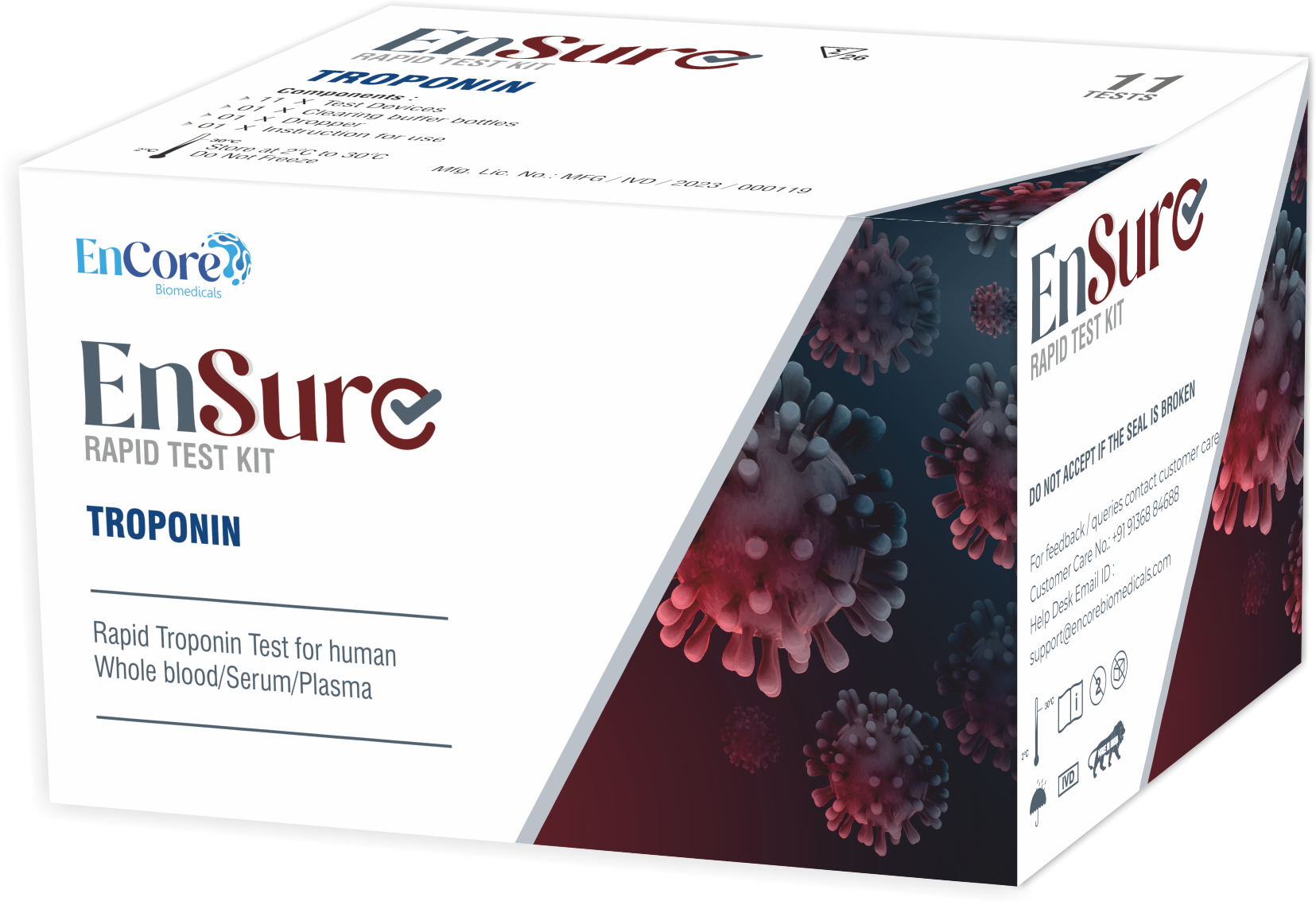Troponin I
Product information
Intended use
The Cardiac Troponin I (cTnI) Rapid Test is a rapid chromatographic immunoassay for the qualitative detection of human cardiac Troponin I in whole blood, serum or plasma.
Principle
The Cardiac Troponin I (cTnI) Rapid Test is a membrane-based immunoassay for qualitative detection of cTnI in whole blood, serum, or plasma. It involves the immobilization of capture reagent in the test line region, where upon adding the specimen, it reacts with anti-cTnI antibody-coated gold particles. The resulting chromatographic migration along the test length indicates a positive result with a colored line if cTnI is present, while the absence of the line signifies a negative result. A control line always appears, ensuring proper specimen volume and membrane wicking for procedural control.
Testing procedure
Importance to know
Warnings and Precautions
-
Please read the instruction carefully before performing the test.
-
Do not use the test after the expiration date.
-
Immediately carry out the test after removing the test device from the pouch.
-
Do not mix or interchange the specimen sample.
Limitation
-
The Cardiac Troponin I (cTnI) Rapid Test is for in vitro diagnostic use only, detecting Troponin I in whole blood, serum, or plasma.
-
The test provides only qualitative results and cannot determine quantitative values or the rate of cTnI increase. It should not be the sole criterion for diagnosing myocardial infarction.
-
The test cannot detect cTnI levels below 0.5ng/mL, and a negative result does not rule out the possibility of myocardial infarction.
-
Results must be interpreted alongside other clinical information available to the physician.
-
Specimens with high heterophile antibodies, rheumatoid factor (RF), or high Biotin levels may affect results. Biotin interference should be considered in case of mismatch with clinical presentation.
-
Some whole blood specimens with high viscosity or stored for over 1 day may not run properly; repeat the test with a serum or plasma specimen from the same patient using a new test cassette if needed.

